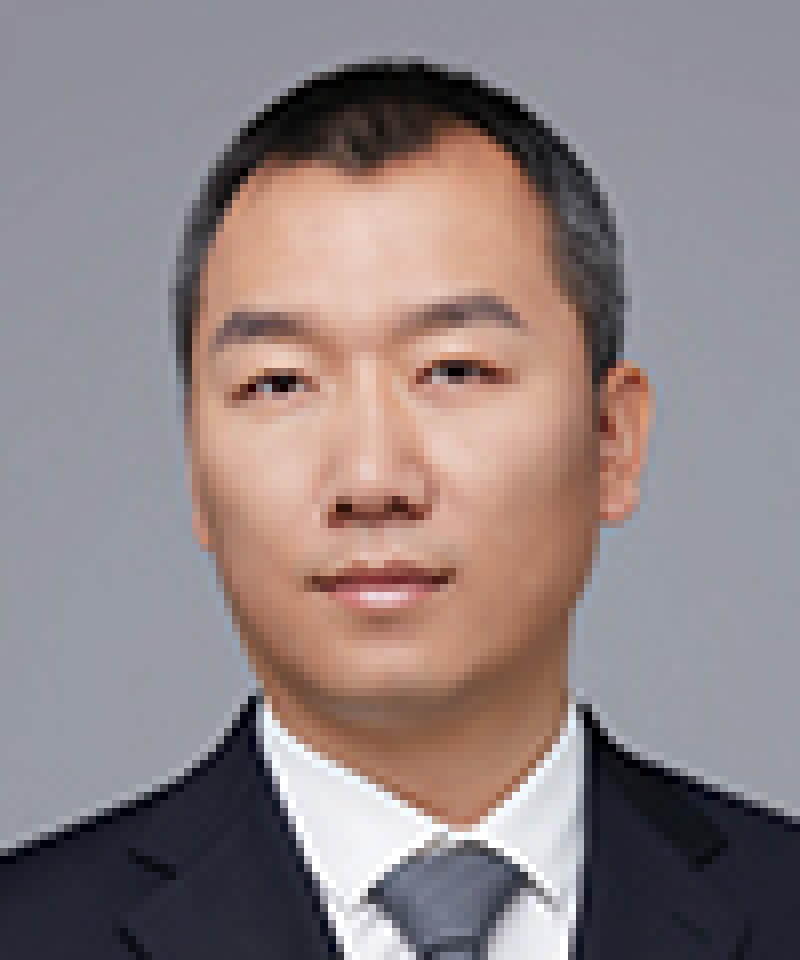The revision of the Guidelines for Patent Examination of the People's Republic of China (revised guidelines) was officially implemented on February 1 2020. Patent applications for inventions that contain algorithmic features or business rules and method features are further specified and exemplified.
Under the revised guidelines, examination is initially carried out under Article 25, paragraph 1, item (2) of the Chinese Patent Law, then further examination is carried out under Article 2, paragraph 2 of the Chinese Patent Law, during examination of the solutions. Since it is necessary to further determine if the solution that includes algorithm features or business rules and method features belongs to a technical solution, the solutions that have not been determined and include algorithm features or business rules and method features in this article are called solutions.
It must be first determined whether the solutions belong to circumstances where no patent right is granted under Article 25, paragraph 1, item (2) of the Chinese Patent Law. It is not necessary to carry out the examination, under Article 2, paragraph 2 of the Chinese Patent Law if the circumstances where no patent right is granted are involved, otherwise, the examination must be carried out under Article 2, paragraph 2 of the Chinese Patent Law.
Under the revised guidelines during the examination to decide whether the solutions belong to the circumstances under Article 25, paragraph 1, item (2) "if a claim is related to abstractive algorithms or absolute business rules and methods and comprises no technical feature, this claim belongs to rules and methods for mental activities as stipulated under Article 25, paragraph 1, item (2) of the Chinese Patent Law and no patent right shall be granted" .
It is clear that in a case where whether or not the solutions belong to rules and methods for mental activities under Article 25, paragraph 1, item (2) of the Chinese Patent Law is determined, both conditions must be met at the same time, in which one condition is abstractive algorithms or absolute business rules and methods and the other is that no technical feature is comprised. Also, a relationship of 'and' is presented between both conditions. That is to say, it occurs where no patent right is granted under Article 25 of the Chinese Patent Law only when both conditions are met at the same time.
Technical features
The examination and judgment focuses on whether or not the solutions include the technical features. However, the technical features are not exactly interpreted in the Chinese Patent Law and its implementing regulations.
Although the technical features are mentioned in multiple places in the revised guidelines, a simple interpretation – "the claims shall describe the technical features of the invention or utility model, and the technical features may be either component elements that constitute the technical solution of the invention or utility model, or the interrelations between the elements" – is given in Chapter 2 (the claims) of Part II.
The technical features are elements that constitute the technical solution. However, it does not explicitly explain what features in the solutions are the 'technical features' or what features the 'algorithmic features or business rules and method features' are.
In the case of examination of the solutions under Article 2, paragraph 2 of the Chinese Patent Law, 'if this claim records technical means applying the laws of nature to solve a technical problem and thus technical effects in compliance with the laws of nature are achieved, the solution defined in this claim belongs to the technical solution as stipulated under Article 2, paragraph 2 of the Chinese Patent Law', the technical solution is defined in Chapter 1 of Part II of the revised guidelines, i.e. 'a technical solution is an aggregation of technical means applying the laws of nature to solve a technical problem. Usually, technical means are embodied as technical features'.
|
|
“the revised guidelines do not explain the reason why the solution with algorithmic features includes no technical features” |
|
|
Technical features are roughly equivalent to technical means and the aggregation of technical means constitutes the technical solution. In other words, the aggregation of technical features constitutes the technical solution.
This is similar to the manner in which 'the technical features are elements that constitute the technical solution' is interpreted, while restrictions 'in compliance with the laws of nature' are additionally imposed. The revised guidelines do not explicitly define what technical means or technical feature complies with the laws of nature (or applies the laws of nature) or what the laws of nature are.
According to the definition in the 'Modern Chinese Dictionary', the laws of nature refer to 'the laws within objective things in nature', i.e. the inherent and intrinsic relationship among natural phenomena. As for a solution of data processing category in a software program, it cannot distinctly explain whether it is a technical feature in compliance with the laws of nature to schedule channel resources according to the number of users accessing a base station, or to find the required information from massive data according to user demands, or to classify products (e.g. risk levels) according to the features included in the product.
The revised guidelines provide multiple examples. The first example describes a method of building a mathematical model, in which algorithm features involve data scheduling and processing, e.g. obtaining a target feature extraction model according to feature value; obtaining an extracted feature value corresponding to each training sample according to the target feature extraction model; obtaining a target classification model according to the extracted training sample.
The first example concludes that 'the solution is not related to any specific application field', 'none of the processing objects, procedures and results thereof are related to a combination with a specific application field', and 'the whole solution includes no technical features'.
The revised guidelines do not explain the reason why the solution with algorithmic features includes no technical features (i.e. not in compliance with the laws of nature), or what solution with algorithmic features complies with the laws of nature.
It can be understood from the analysis and conclusion that the problem of this solution is due to 'being not related to any specific application field' (a technical application field). If the claims of this example defines the application field, the problem with Article 25, paragraph 1, item (2) of the Chinese Patent Law can be avoided, and the double-determination method of 'abstractive algorithms' and 'comprising no technical feature' not adopted.
Application field
Another issue needs to be considered. If the method of building a mathematical model in the first example can be applied to many scenarios (fields), such as text classification tasks, image classification tasks, voice classification tasks, or similar, limitation of the application field would inevitably narrow the protection scope of the claims to a significant extent.
It is a judgment call whether or not the application field of the algorithm should be regarded as a limiting condition of the algorithm to narrow down the protection scope of the claims, in order to avoid the problem of Article 25, paragraph 1, item (2) of the Chinese Patent Law.
Another, similar example describes a training method of a convolutional neural network model, in which the included algorithm features also involve data scheduling and processing, e.g. acquiring initial model parameters, acquiring a plurality of training images, obtaining a first feature image by performing convolution and maximum pooling operations on each training image, performing horizontal pooling operations on the first feature image, etc.
In the analysis and conclusion of this example it is clarified that the data processed in the steps of the model training method are image data and how the image data are processed in the steps, and the neural network training algorithm is shown to be closely related to the image information processing. Means that perform different processing operations of images and training on different convolutional layers are used and technical means that follow the laws of nature are used.
This solution processes the image data, which is a process of applying abstractive algorithms to the image data, and thus does not conform with the provisions of Article 25, paragraph 1, item (2) of the Chinese Patent Law.
The adopted algorithm features belong to the technical features. However, it does not explicitly explain why the algorithm for data scheduling and processing in the second example is a technical feature, while the algorithm for data scheduling and processing in the first example is not a technical feature.
The cause for inference is that the data as the processing object are abstract data without technical attributes in the first example, whereas the data as the processing object are image data with technical attributes in the second example.
Based on the analyses and conclusions in the revised guidelines, it is possible to reach a conclusion that if the algorithm explicitly defines the application technical field (e.g. the processing object has technical attributes), the data processing means of the algorithm naturally becomes a technical feature and there is no need to separately determine whether the algorithm includes technical features.
The above judgment is obtained whether the solution complies with the provisions of Article 2, paragraph 2 of the Chinese Patent Law or not. That is, the solution contains the technical features (i.e. adopts technical means applying the laws of nature), and the remaining technical problems and the determination of technical effects are well solved. The provisions of Article 2, paragraph 2 of the Chinese Patent Law are compared and analysed in two cases below.
Case 1: Method and system for risk assessment
Case 1 (No.CN106408423A), entitled 'method and system for risk assessment', is intended to solve the problem of high artificial misjudgment rates and insufficient accuracy in the risk review of insurance application and claims settlement in the prior art.
It is proposed to calculate a score of an insurant for a predetermined event by establishing a plurality of score card models and score card weights, and therefore, the problem of inaccurate risk assessment in the prior art can be avoided.
The examiner points out in the proposed examination opinions that the problem solved thereby is scoring of event risks, which is not a technical problem, but an economic problem. The adopted means is not a technical means that follows the laws of nature, nor does it achieve a technical effect, thus it fails to constitute a technical solution and breaches the provisions of Article 2, paragraph 2 of the Chinese Patent Law.
From the above analyses, the application field of the algorithm is insurance services that belong to the category of economics other than the technical field in the solution of this application, so the adopted algorithm constitutes no technical means. Determination of the application technical field of the solution plays a key role in determining whether or not the solution includes technical features.
Case 2: Bank product advertisement delivering method, device and system
Case 2 (No.CN109658226A), entitled 'bank product advertisement delivering method, device and system', which is intended to solve the problem of single and inefficient advertising of bank self-service terminal products in the prior art.
It is proposed to acquire proportionality coefficients of a set of customers in a predetermined area and bank products held by each customer in the set of customers. The number of potential customers for bank advertisements currently broadcasted is calculated according to the proportionality coefficient of bank products held by customers and an amount of available funds.
The resources occupied by the advertisements currently broadcasted are determined based on the number of potential customers. This way, the effects of advertising bank products that most customers are interested in an advertising area can be achieved.
The examiner mentions that in the proposed examination opinions that advertising products to attract more customers is not a technical problem. The adopted solution involves artificial rules of economic laws, which is not the technical means that follows the laws of nature. Nor does it achieve a technical effect, thus it fails to constitute a technical solution and breaches the provisions of Article 2, paragraph 2 of the Chinese Patent Law.
The solution of this application is related to non-technical fields such as economic indicators, banking and financial services and the like, and therefore, the adopted algorithm includes no technical means based on the laws of nature. As can be seen, like Case 1 above, determination of the application technical field of the solution plays a key role in determining whether the solution includes technical features.
Summary
The two examples and the analyses of the two cases in the revised guidelines on algorithm solutions explain that the application field of algorithm belongs to the technical field. This essentially can allow the algorithm to meet the requirements of technical features without having to separately consider whether to include technical features, and avoids the solution from falling within the scope of Article 25, paragraph 1, item (2) of the Chinese Patent Law.
On the premise that the applied algorithm belongs to the technical features, it can be confirmed that the solution belongs to the technical solution as stipulated under Article 2, paragraph 2 of the Chinese Patent Law by stating the involved technical problem and the corresponding technical effects in the solution.
Click here to read all the chapters from MIP's China Special Focus

Lei Jia
Patent attorney
Beijing Sanyou Intellectual Property Agency
T: +86 10 8809 1921
Lei Jia is a patent attorney at Beijing Sanyou Intellectual Property Agency, who specialises in patent validation, training and tech mining. He has provided a consulting and application service to many financial enterprises such as Alibaba, ICBC and China UnionPay.
Lei has worked for Siemens (China) as an in-house consultant. His expertise includes patent filling, re-examination, infringement analysis, invalidation analysis and patent searches in the technical fields of computer software.
Lei is a graduate from Beijing University of Technology having completed a bachelor's degree in computer science.











